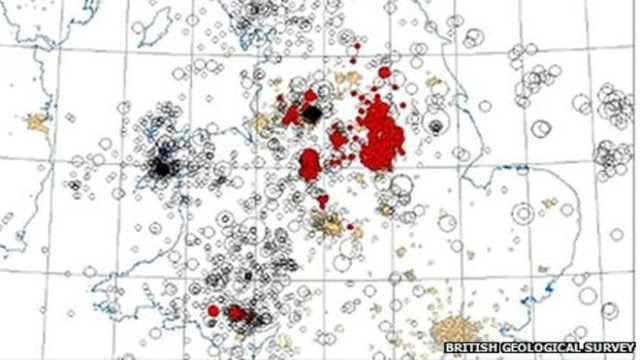
Seismic activity across the UK has been analysed for the first time to set a national baseline for earthquakes caused by human activity ahead of any future decisions around fracking.
The study – published today in the academic journal Marine and Petroleum Geology – reveals that since 1999, an average of at least three onshore earthquakes a year with local magnitude greater than or equal to 1.5 were as a result of anthropogenic activity.
The research was carried out by ReFINE (Researching Fracking in Europe), an independent research consortium focusing on the issue of shale gas and oil exploitation using fracking methods.
Research lead Professor Richard Davies, of Newcastle University, said: “Earthquakes triggered or induced by humans are not a new concept for us here in the UK, but earthquakes related to fracking are.
“Understanding what the current situation is and setting a national baseline is imperative, otherwise how can we say with any confidence in the future what the impact of fracking has been nationwide?
“What this research shows is that in recent years, an average of at least three earthquakes a year, with local magnitudes greater than or equal to 1.5, are as a result of human activity. If widespread exploitation of the UK’s shale reservoirs is granted and numbers consistently rise then, in conjunction with local monitoring data, we should be able to confidently demonstrate a causal link.”
About the study:
The first human-induced earthquake in the UK probably occurred in 1755 due to the collapse of lead mines in Derbyshire. Data collected by the British Geological Survey between 1970 and 2012 shows there have been approximately 8,000 onshore recorded seismic events in the UK with a range of origins including mining, deep geothermal energy, industrial explosions, meteorological phenomena such as lightning strikes and natural causes.
Analysing the 1,769 seismic events over a forty year period that were above or equal to 1.5 in local magnitude – the minimum detectable threshold – the team of experts from Newcastle, Durham and Keele universities showed that at least 21% were related to human activity, at least 40% were naturally-occurring and 39% were ‘undefined’. “We have been careful only to include earthquakes where there has been a strongly indicated link to human activity,” explains Professor Davies. “Using historic data means that isn’t always possible so some man-made events remain undefined.”
The data shows a sharp decline in the number of earthquakes from the 1980s, mirroring the demise of the UK coal industry. From 1999 onwards, there has been an average of at least three earthquakes a year related to human activity, with an annual range between zero and eight.
Taking into account the undefined earthquakes, the author’s average would still be just 12, providing a useful baseline prior to any future widespread use of fracking for the exploitation of the UK’s shale reservoirs.
The link between coal mining and man-made seismicity has been known for the last 150 years and became particularly apparent when the British Geological Survey launched its National Seismic Monitoring system in the late 1960s.
This latest research suggests that by the mid-1980s, a third of all detected seismic events in the UK were coal mining related, with the majority occurring in Derbyshire, Nottinghamshire, Staffordshire and Yorkshire coalfields. The number of coal mining related earthquakes drops by more than 95% from 1991, correlating to the closure of the UK’s deep mines.
The first UK exploratory fracking operation at Preese Hall, Lancashire, in 2011 resulted in a 2.3 magnitude earthquake. Two months later, a second earthquake of 1.5 magnitude was recorded and operations were suspended.
“Historically, fracking-related earthquakes have been small but the UK is criss-crossed by faults – some of which may be critically stressed – and if triggered these could result in earthquakes that people can feel,” explains Professor Davies.
“Worldwide, the biggest published example of a fracking earthquake to date is 4.4 in magnitude, recorded in Canada last year, although an event of this size in the UK is highly unlikely.
“We are the first country in the world to analyse historical earthquakes to establish a baseline. Our research provides the UK with its first pre-fracking national baseline against which, allied to other data sets, we will be able to make informed decisions about shale exploitation and the impact it has, or hasn’t had, in the future.”
Reference:
“Anthropogenic earthquakes in the UK: a national baseline prior to shale exploitation.” Miles P Wilson, Richard J Davies, Gillian R Foulger, Bruce R Julian, Peter Styles, Jon G Gluyas and Sam Almond. Marine and Petroleum Geology. September 9, 2015.
Note: The above post is reprinted from materials provided by Newcastle University.










